CityTouring
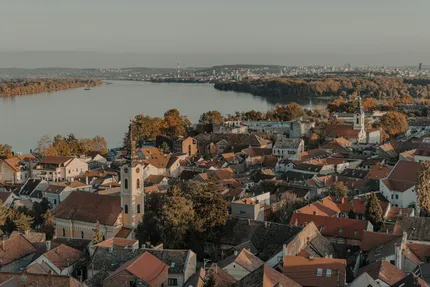
City trip to Belgrade
SerbiaBelgrade, the bustling capital of Serbia, is a city known for its vibrant culture and rich history at the confluence of the River Sava and Danube. It’s an eclectic mix of architectural styles, where remnants of the Ottoman and Austro-Hungarian Empires meet Soviet-era concrete. Visitors can explore Kalemegdan Fortress, a historic site with expansive views over the waterways, or immerse themselves in the lively energy of Skadarlija, a bohemian quarter with cobblestone streets and traditional kafanas offering local music and cuisine.
Belgrade's nightlife scene is famous across Europe, transforming into a party hub with clubs that float along the riverbanks. Additionally, museums such as the Nikola Tesla Museum and the Museum of Contemporary Art offer insights into Serbia’s past and present. Green spaces like Ada Ciganlija provide a green oasis perfect for relaxation or sporting activities.
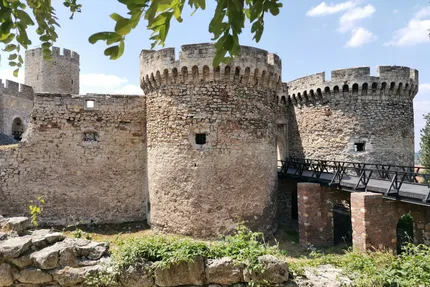
Belgrade Fortress
Explore Belgrade Fortress, a historic site offering stunning views of the confluence of the River Sava and Danube. This ancient fortress, surrounded by the Kalemegdan Park, provides insight into the city's rich history and a peaceful retreat from urban life.
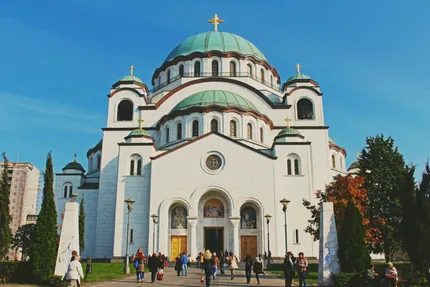
St. Sava Temple
Visit St. Sava Temple, one of the largest Orthodox churches in the world. Its impressive white marble and granite facade houses intricate frescoes and a stunning gold-plated mosaic interior, embodying Serbia’s religious and cultural heritage.
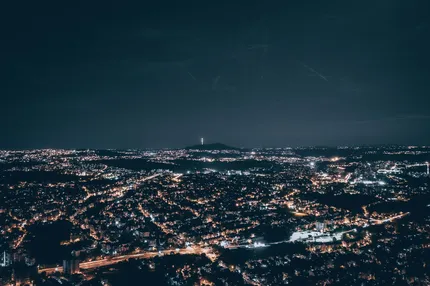
Nightlife
Belgrade nightlife buzzes with energy, offering vibrant clubs, cozy bars, and live music venues. Riverfront splavs host all-night parties, while Skadarlija charms with bohemian vibes. A blend of tradition and modernity thrives.
Belgrade is a great fit for history buffs, food enthusiasts, and nightlife seekers. The city's wide range of historic sites makes it ideal for those interested in exploring the past, from ancient fortresses to Tito's legacy. Food lovers can indulge in hearty Serbian cuisine, sampling local dishes at traditional kafanas. With its reputation for having one of Europe’s best nightlife scenes, Belgrade is perfect for young travelers or those who enjoy vibrant club experiences and live music.
The city's welcoming nature also suits solo travelers or groups of friends. Artists and culturists will appreciate the numerous festivals and events that showcase local and international talents throughout the year. Belgrade offers an energetic and diverse urban experience that leaves a lasting impression.
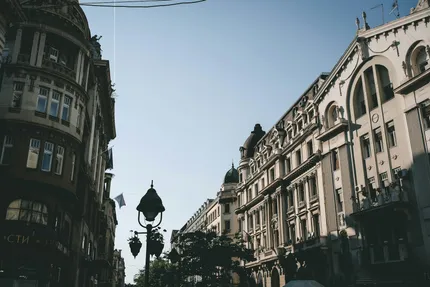
Best time to visit Belgrade
The best time to visit Belgrade is during the late spring (May to June) or early autumn (September to October) when the weather is mild and festivals are plentiful. The summer months can be hot, but they offer vibrant outdoor activities.
More activities and things to see in Belgrade:
Knez Mihailova Street
Stroll along Knez Mihailova Street, Belgrade's bustling pedestrian boulevard lined with 19th-century architecture. This shopping and cultural hub boasts numerous cafes, shops, and street performances, providing a vibrant atmosphere day and night.
Skadarlija
Wander through Skadarlija, Belgrade's charming bohemian quarter. Known for its cobblestone streets and traditional Serbian restaurants, this area captures the essence of old-world charm and vibrant nightlife.
Ada Ciganlija
Enjoy nature and recreation at Ada Ciganlija, a river island turned popular leisure spot. With beaches, sports facilities, and walking trails, it's a perfect escape for locals and tourists alike, offering activities like cycling and kayaking.
Nikola Tesla Museum
Explore the Nikola Tesla Museum, dedicated to the renowned inventor and electrical engineer. The museum houses original documents and personal artifacts, showcasing Tesla's life and groundbreaking work in a fascinating exhibition.
Republic Square
Visit Republic Square, Belgrade's main public space and cultural heart. Surrounded by significant landmarks including the National Theatre and National Museum, it's a popular gathering place for both locals and visitors.
Zemun
Discover Zemun, a picturesque neighborhood known for its charming Austro-Hungarian architecture. Stroll along the banks of the Danube, enjoy views from Gardos Tower, and indulge in riverside dining experiences.
Museum of Yugoslavia
Visit the Museum of Yugoslavia, preserving the cultural history of the former Yugoslav state. Explore exhibits that chronicle Tito’s life, the post-war era, and the diverse cultural heritage of the region.
Getting around in Belgrade
Belgrade, the vibrant capital of Serbia, offers several convenient ways to explore its diverse neighborhoods and attractions. Public transportation is quite efficient, with a network of buses, trams, and trolleybuses serving most areas. Tickets are affordable and can be purchased at kiosks or from the driver. For a more flexible option, consider using the city's affordable taxi services or ridesharing apps like CarGo. Walking is an enjoyable way to discover the central districts, with key sights such as Kalemegdan Fortress and Knez Mihailova Street easily accessible on foot. While cycling infrastructure is limited, cycling enthusiasts can take advantage of the shared bike program and the scenic routes along the Danube River. Overall, using a combination of public transport and walking is the best way to get around Belgrade, although having a car might be useful for exploring suburban areas and reaching certain attractions outside the city center.
Getting to Belgrade
To reach Belgrade, Nikola Tesla Airport (BEG) serves as the main gateway, hosting a range of international flights. Direct connections are available from many European cities, along with several destinations in the Middle East and North Africa. Once at the airport, you can easily reach the city center via the A1 minibus or taxis. For those traveling by train, Belgrade is an important railway hub with connections from cities like Budapest, Vienna, and Zagreb. The Belgrade Centre railway station is the main point of arrival for international and domestic routes. Long-distance buses are also a popular and affordable mode of transport to Belgrade, with services from numerous European countries arriving at the central bus station. This makes the city highly accessible whether you're flying, taking the train, or opting for long-distance buses.